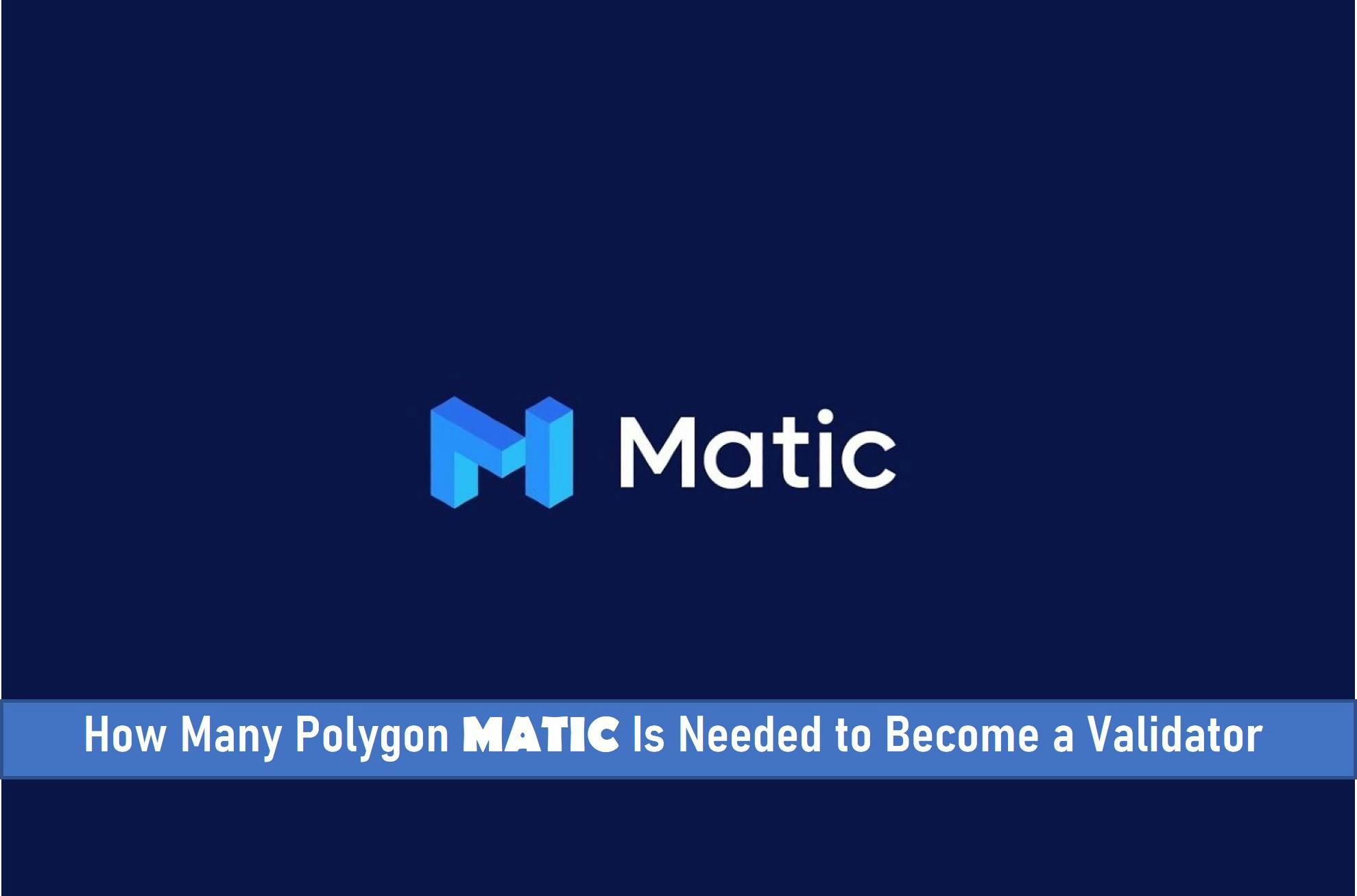
It is no news that most crypto investors are aware of the problems faced by Ethereum, one of such being the scalability challenge. Currently, you can only execute 15 transactions per second.
Given its lofty intentions to become a global computing platform, this is negligible in terms of more ambitious use cases that go beyond ERC20 tokens for fundraising and NFTs (non-fungible tokens).
Key Takeaways
• Setting up a verification node is a task that must be completed. Backup, availability, firewall security, HSM, attack prevention measures, and other factors must all be addressed to run and maintain the node effectively.
• One Matic token is all an individual needs to become a validator and these tokens are used by the validator to make sure that the network is safely secured, getting rewards in return.
SEE ALSO: 9 Things You Should Know Before Buying Polygon MATIC
SEE ALSO: How to Cloud Mine Polygon MATIC
SEE ALSO: How To Be A Profitable Validator Node With Tezos (XTZ)
Matic is an Ethereum sidechain solution that utilizes off-chain computation as part of its process to solve the scalability problem and ensure the safety of assets on the Plasma network.
Matic keeps the assets in the backbone safe by employing a more convenient account-based Plasma version.
It ensures the security of public transactions while utilizing proof-of-stake validators.
The approach is meant to allow for speedier partial commitments (1 second) for improved user experience, while ultimate assurance is realized when the main chain’s checkpoint is violated.
Who is a Validator
A validator in the network is a person who secures the Matic tokens in the system and runs the Heimdall Validator and Bor block generating nodes to keep the network running.
One Matic token is all an individual needs to become a validator and these tokens are used by the validator to make sure that the network is safely secured, getting rewards in return.
A validator is responsible for the following tasks:
1. Distribute network tokens and launch validation nodes to serve as validators within the system.
2. Earn operational incentives for confirming blockchain state changes.
A blockchain validator is tasked with the responsibility of validating transactions on a blockchain. As long as you belong to the Matic network, you are eligible to become a validator, which involves running nodes and receiving rewards for doing so.
They prohibit some Matic tokens as part of the ecosystem to promote adequate engagement from validators.
Validators in the Matic network are chosen through an on-chain auction. These chosen validators serve as both block producers and validators.
As soon as a checkpoint is validated, the main chain (Ethereum main chain) is updated, and validators are rewarded depending on their network involvement.
SEE ALSO: How To Store Your Polygon Matic On Ledger Nano Wallets
SEE ALSO: How to store your Polygon MATIC on Metamask Wallets
Knowing How to Setup a Matic Validator Node
Setting up a verification node is a task that must be completed. Backup, availability, firewall security, hardware security modules, attack prevention measures, and other factors must all be addressed to run and maintain the node effectively.
There is a wealth of guidance and practice for validators, notably lessons learned from previous networks:
1. A subset of the group’s active validators is chosen to operate as block producers for some time. These block producers are in charge of improving and publishing blocks to other parts of the Matic network.
2. The control point is the data structure of all blocks developed within a given range. Every node ensures that they validate the same thing and that their signatures are included.
3. A validator from the set is in charge of gathering all signatures for a certain checkpoint and fixing them on the main chain.
Becoming a Validator
It has already been stated that validators pose a low personal risk because they are expected to have skin in the game.
Because the number of Validator slots is limited, a strong switch mechanism will be implemented to ensure that there are no minimum self-approval criteria for the Matic Network stakeout program.
However, one might be willing to come to terms with the fact that the average percentage of a verifier might be worth quite something and may increase substantially given time.
A detailed confirmation score system is calculated as part of the replacement approach.
If all open validation slots have been taken, the only thing a new validator can do will be to replace one of the existing records if it surpasses the least requirements needed by the validator. Bidding is a seamless process in real life.
This spot is awarded to the person who purchases the most shares. However, the number of validators available in this ecosystem is not restricted.
To assess validators, our initial offer design used a combination of inventory, seniority, earned incentives, and any deductions. You can, for example, use your interests to replace an existing validator.
Assume that the current group’s validators have the same participation ratio. There was no downtime as compared to the overall group and in this example.
Individuals who have an interest in running a finished node but do not have the opportunity can be part of the process as agents or delegators. Rewards are not allocated to those who staked tokens. This activity strengthens the network’s security.
Frequently Asked Questions (FAQS)
Is it possible to mine Matic?
Matic is not a PoW (Proof-of-work) token, hence it cannot be mined; instead, you must set up a validator node that connects to the Matic network to receive rewards for verifying transactions.
How much does a Matic transaction cost?
According to an article released by Polygon co-founder Sandeep Nailwal, the Polygon (Matic) network has a minimum value transaction charge of 30 gwei, implying that the change was essential to avoid spam transactions on the network.
Is Matic a decent altcoin to invest in?
Matic Network (Matic), a well-known cryptocurrency, has increased by 9% in the last 24 hours.
The asset’s good price-performance comes despite Bitcoin and Ethereum’s stagnation, providing an opportunity for altcoins to break higher.
While the current trend is still in its early stages, experts remain bullish on Matic’s long-term price prospects.
What is the future of the Matic Coin?
Experts predict that the future price of Matic will be quite high by the end of the year. They predict that the coin might achieve its goal price of $2.84 in 2022.
Final Thoughts
All it takes to become a validator is just one Matic coin. This article explains why it is so and answers other questions as to what becoming a validator entails as well as their responsibilities.
Read More




